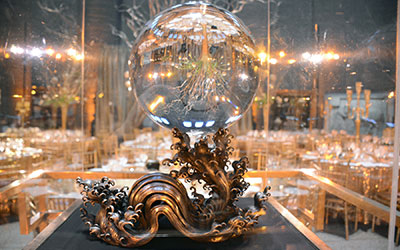Architectural Team Selected for Harrison and Coxe Wings Renovation Project
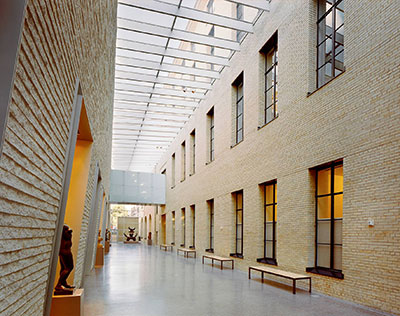
The Penn Museum is pleased to announce the appointment of Gluckman Tang Architects to design infrastructure renovations for the Harrison and Coxe Wings, housing its signature galleries of ancient Egyptian and Asian collections, as well as the Harrison Auditorium and Egyptian store rooms. Gluckman Tang, based in New York, is an internationally recognized firm with a focus on cultural and educational institutions, renowned for its work in museums and sensitive intervention into historic buildings in both the U.S. and Europe. Richard Gluckman, AIA, founder and Partner-in-Charge, will lead the Penn Museum project team, which includes Perry Whidden, AIA, as Principal Project Director, and James Lim, AIA, as Associate Project Architect. Recent Gluckman Tang museum renovation projects include the transformation of the Perelman Building at the Philadelphia Museum of Art (right), where objects from the Penn Museum’s African Collection will be on display in the exhibition Look Again: Contemporary Perspectives on African Art, from May 14 to September 25.
CAAM’s New Digital Microscope
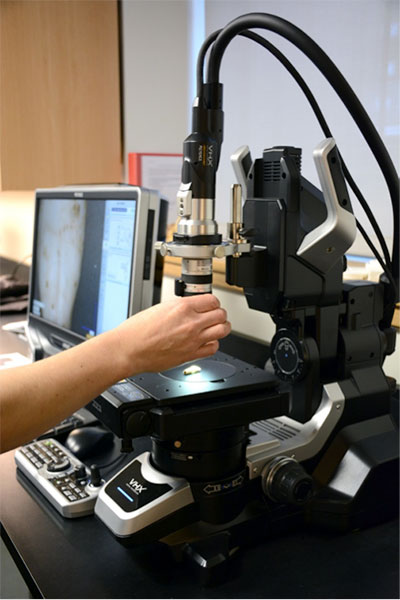
In December 2015, the Center for the Analysis of Archaeological Materials (CAAM) purchased a new digital microscope that allows for the examination, 3D imaging, and measuring of samples and objects. With a 20-200x zoom, motorized stage, and tilting camera, the digital microscope provides non-destructive, high-definition and fully focused images almost instantly. The microscope has already been used for a number of projects: to determine if native gold was used in jewelry from Kourion (shown to the left, below), to image organic pseudomorphs on metal objects from Ur, to look at wear marks on a Neanderthal tooth, to observe cell structure on wood charcoal, and to identify the multiple layers of wall plaster on a mudbrick. Most importantly, the new microscope is a teaching tool.
During the Spring semester, students in CAAM’s Archaeobotany Seminar used it to image experimental charred plant remains and look for phytoliths on utilized tool edges.
Preparing to Move a Palace
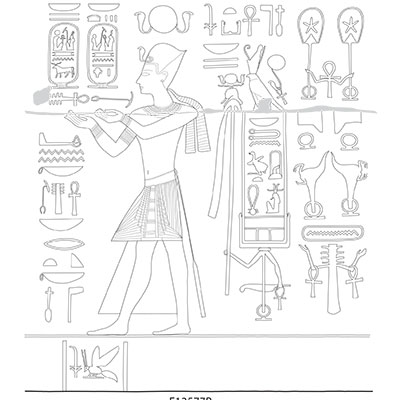
As part of the reinstallation of the entire Egyptian collection that the renovation of the Coxe and Harrison Wings will make possible, the magnificent Palace of Merneptah (or Merenptah), the son of Ramesses II who succeeded his father to the throne around 1213 BCE, is undergoing conservation and reconstruction. To help with this effort, Jean Walker, Keeper of Collections, has been photographing all of the architecture. Illustrator Ardeth Anderson and Curator-in-Charge Dr. David Silverman are working together on the epigraphy: they are copying all of the scenes and inscriptions on the stone elements. Through computer graphics, the two copyists are reproducing all the texts and reliefs, including even minute details, such as the exact number of delicate folds on part of a garment. The resulting display and the accompanying publication should provide a fitting tribute not only to the original structure itself but also to its excavator, Dr. Clarence S. Fisher, Philadelphia native and University of Pennsylvania graduate.
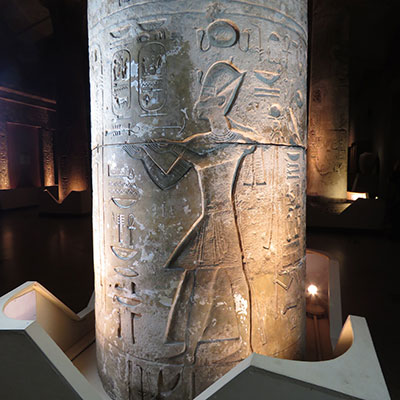
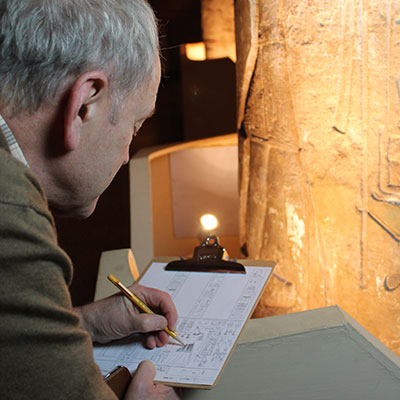
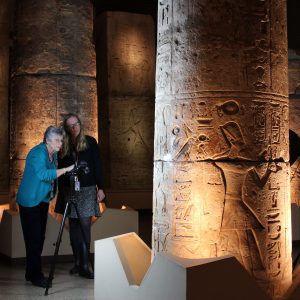
Museum Objects Travel the World
The Penn Museum has an active loans program, sending objects from the collection to museums and institutions around the world. Among the many exhibitions we have loaned to this spring, including Look Again: Contemporary Perspectives on African Art opening at the Philadelphia Museum of Art on May 14 and comprised entirely of Museum objects, our collections can be seen in the following three exciting exhibitions in Philadelphia and New York City.
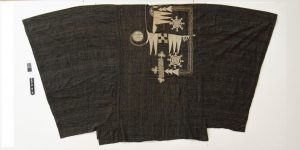
THREADS OF TRADITION
Philadelphia Museum of Art
Perelman Building, Philadelphia, PA
Now open, closes February 20, 2017.
Ten objects from the African section
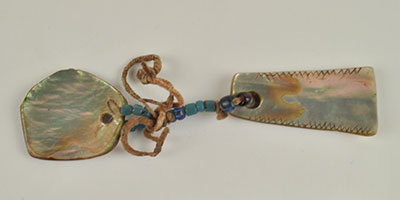
GATHERING VOICES: THOMAS JEFFERSON AND NATIVE AMERICA
American Philosophical Society
Philadelphia, PA
Now open, closes December 30, 2016.
One object from the American section
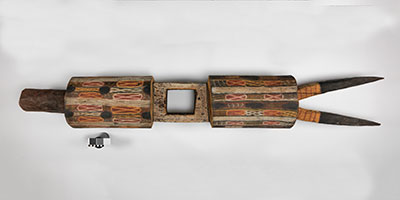
ENTANGLED FRONTIERS
Bard Graduate Center
New York, NY
Now open, closes September 18, 2016.
Seven objects from the Oceanian section
Programs for High School Elective Classes
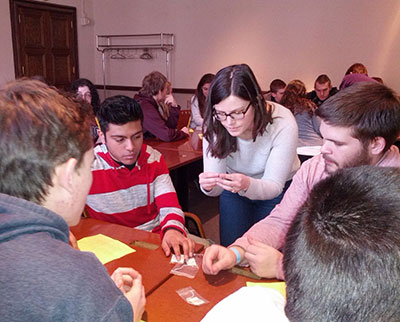
The Penn Museum has long been a resource for world history courses, as a place where students can see material remains of ancient cultures. However, the Museum’s work covers more than just ancient history. Many of the lesser-known aspects of our work, such as expertise in ancient languages, overlap with elective courses, where high school students are encouraged to pursue more specific passions and interests. Sometimes, teachers of elective courses cannot find relevant field trips for their students. By designing one day for Latin classes (February 10) and one day for criminal science classes (March 16), the Museum was able to meet the needs of even more teachers and their students in the form of presentations, tours, and workshops. Since the lessons were taught by Penn professors and graduate students, visiting school groups were also able to explore future career paths.
New Group Sales Manager
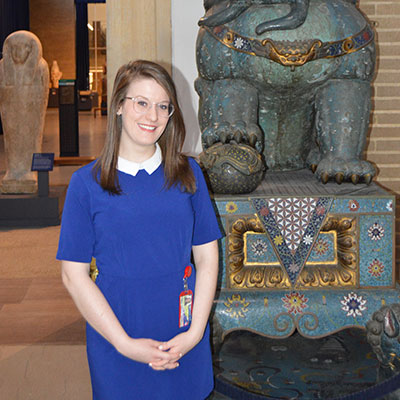
The Penn Museum recently added Group Sales Manager Amanda Grady to the team. Coming from The Philadelphia Orchestra, Amanda will be developing group
sales strategies, providing Museum access to adult groups, and positioning the Penn Museum as an essential tourism destination for Philadelphia. Aside from discounted admission, groups can take advantage of additional opportunities to enhance the value of their visit to the Museum: special tours, informative talks given by archaeologists and anthropologists, hands-on workshops, private access to the Archives, uniquely crafted experiences for visitors with disabilities, and much more. You can reach Amanda at amgrady@upenn.edu, 215.746.1219, or grouptickets@pennmuseum.org.
Educators Promote Careers in STEM to Local Youth
In February, the Penn Museum’s famed Mummy Mobiles visited a Philadelphia convention for African American engineers and scientists, called the BEYA Stem Conference. Hosted by Lockheed Martin Corporation, The Council of HBCU Engineering Deans, and US Black Engineer & Information Technology magazine, the conference offered a special Career Day for hundreds of local school district students, allowing them to learn about careers in the science and tech industries. The Museum’s Unpacking the Past team hosted three Mummy Makers workshop sessions and a hands-on artifact table, interfacing with over 300 students and teachers throughout the day. Councilwoman Jannie Blackwell even stopped into a Mummy Makers session, urging students to visit the Penn Museum with their families.
Behind the Scenes at The Golden Age of King Midas
Producing an exhibition like The Golden Age of King Midas involves the time and effort of staff from all parts of the Museum. On these pages, enjoy a behind-the-scenes look at the hard work that went into the installation of our newest exhibition, beginning with the long-awaited arrival of the objects on loan from Turkey and ending with the opening of the exhibition.


Grant install a Urartian helmet, made of bronze and dating to the late 7th century BCE.






Gala Exhibition Preview is a Truly Golden Affair

On February 5, the Penn Museum celebrated the world premiere of our exclusive exhibition The Golden Age of King Midas with a golden gala. Invited by Penn President Dr. Amy Gutmann and Museum Williams Director Dr. Julian Siggers, nearly 300 guests, including Ertan Yalçın, Consul General, and several members of his team from the Consulate General of Turkey in New York, enjoyed signature golden cocktails and a sneak preview of the exhibition followed by dinner in the soaring Rotunda.
The gala was co-chaired by Michael J. Kowalski (W74, PAR), John J. Medveckis (PAR), and Nancy F. Tabas; it honored Dr. Charles K. Williams, II (GR78, HON97), Director Emeritus of Excavations at Ancient Corinth for the American School of Classical Studies at Athens, a longtime supporter of the Museum who dug at the Gordion site as a Penn doctoral student.
With lead support from Mrs. Joel L. Bachman in honor of Mary Bert Gutman, Ingrid A. and Donald C. Graham, The Graham Foundation, Barbara D. Kowalski
and Michael J. Kowalski, John J. Medveckis, and Charles K. Williams II, the gala grossed over $500,000 for comprehensive support of the Penn Museum’s wide-ranging programs in excavation and research; site conservation and heritage protection; under-graduate and graduate teaching; K-12 enrichment; and exhibitions and public programs.








